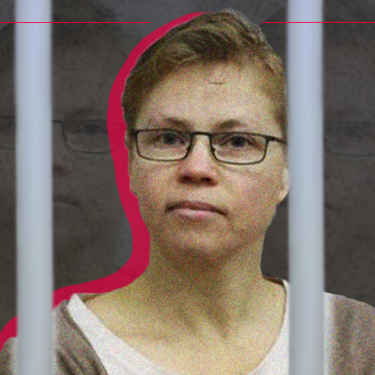73 women journalists will spend 8 March behind bars

On International Women's Day, Reporters Without Borders (RSF) calls for the immediate and unconditional release of imprisoned women journalists throughout the world, and sounds the alarm about the disappearance of women journalists from the Afghan media landscape.
Of the 550 journalists and media workers who are currently imprisoned worldwide, 73 – more than 13% – are women, according to RSF’s press freedom barometer, a proportion that has doubled in the past five years. More women are reporting in the field, they are more visible in newsrooms, and they are also more likely to fall victim to relentless persecution in 14 countries around the world, especially China (with 21 women journalists in prison), Iran (12), Belarus (10), Vietnam (4) and Turkey (4).
Front line
Women journalists have paid the price for being at the front line in recent crises. Of the 12 women journalists currently detained in Iran, 11 were arrested in the wake of the protests about Kurdish student Mahsa Amini’s death in police custody. Two of the women journalists who did most to draw the public’s attention to her case – Nilufar Hamedi, by going to the hospital where she was in a coma, and Elahe Mohammadi, by covering her funeral – are accused of “propaganda against the system” and “conspiring to act against national security – charges that could carry the death penalty.
In Myanmar, Htet Htet Khine, a woman freelancer held in Yangon’s notorious Insein prison since August 2021, has been sentenced twice to three years of imprisonment with hard labour on charges of “inciting hatred and violence against the armed forces” for reporting the violence they used after taking power in a coup in February 2021.
In Belarus – which sadly stood out in RSF’s 2021 Round-up as the country that was holding more women journalists (17) than men (15) – nine are still being held for covering unauthorised protests. And they are being spared nothing, neither long sentences nor denial of medical care. Katsiaryna Bakhvalava (aka Katsiaryna Andreyeva) was sentenced to a total of ten years and three months in prison for filming an anti-Lukashenko protest on Minsk’s “Square of Changes” in November 2020. She has begun to lose her sight but nothing is being done to remedy it. Her colleague Ksenia Lutskina, who is serving an eight-year sentence, has asthma problems and a brain tumour that are not being treated.
Slow death, mistreated, denied care
In Vietnam, Pham Doan Trang, who was awarded RSF’s Prize for Impact in 2019, has been moved to a prison 1,000 km south of Hanoi in an attempt to suppress any reporting about her state of health, which is critical. Women detainees in China are subjected to similarly appalling conditions that include denial of medical attention and mistreatment. Huang Xueqin (Sophia Huang), a journalist famous for her involvement in the #MeToo movement in China, suffers from stabbing pains in her waist after being mistreated and even tortured.
From their cells, some women journalists manage to report what they and their fellow detainees are having to endure. “In recent days, a number of inmates […] have given shocking accounts of how they were assaulted,” Iran's Narges Mohammadi, a 2022 RSF Press Freedom laureate, wrote in an open letter published on 24 December 2022. A month before that, in a book entitled White Torture, she described another form of torture practiced in prisons, involving sensory deprivation during prolonged, total solitary confinement with no access to natural light.
Erasing women journalists from Afghanistan
The media landscape in Afghanistan has changed beyond recognition in less than two years. Half of the 526 media outlets that existed until the summer of 2021 have had to close and, of the 2,300 women journalists registered prior to 15 August 2021 (the date of the Taliban takeover), fewer than 200 are still working. Almost all of the women journalists (90%) have had to leave their jobs and some have fled the country, although exactly how many have managed to flee is not known.
Those still working must accept conditions that are becoming more and more draconian if not impossible. The Taliban recently banned women journalists from interviewing men and from attending press conferences in some provinces. Similarly, they are banned from hosting radio or TV shows together with male colleagues, or from receiving male guests.
The Taliban Ministry for the Promotion of Virtue and Repression of Vice has also imposed a strict dress code. When women journalists are on camera, they must be covered from head to toe and only their eyes may be seen.
